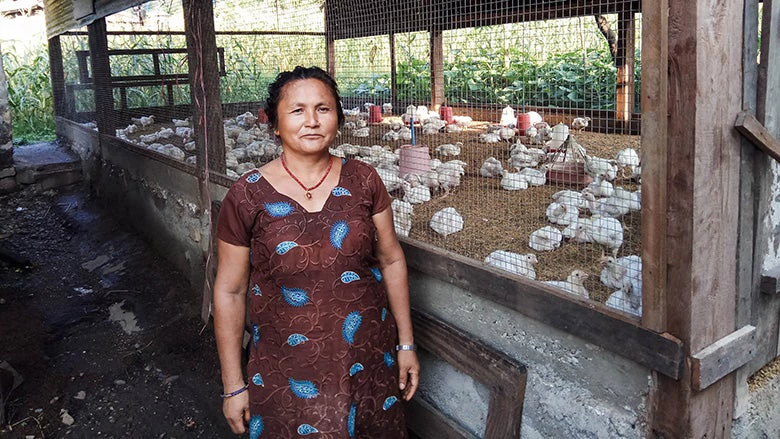
Kofi Annan once said that ‘There is no tool more effective than the empowerment of women.’ This is definitely true in the agriculture sector: Empowered women are critical to sustainable agricultural growth and equitable rural transformation. In June 2018, we published a report on “Male Outmigration and Women’s Work and Empowerment in Agriculture, which explores the impacts of rural outmigration on the lives and livelihoods of women who stay behind on the farms. The first in what will be a series of publications, this report uses innovative survey data to produce rigorous evidence on the gendered impacts of rural outmigration.
Why does it matter? Globally, migration is an important development agenda and is closely connected with agriculture in many countries. The available evidence suggests that across the globe, migration originating from rural areas is predominantly male, which could potentially lead to significant socioeconomic changes in rural areas, including changes in traditional gender norms. Using data from two comparable, surveys for Nepal and Senegal collected between August and November 2017, we studied the effects of male outmigration from rural, primarily agricultural areas on women’s work and empowerment--both in agriculture and in the household.
Here’s what we found: first, as men migrate, women do not drop out of the labor force but continue to farm. Their roles in agriculture, however, may change. This is very clear in the case of Nepal, but not in Senegal. In Nepal, when men migrate, women are no longer seen as contributing family workers, but rather as primary farmers. In Senegal, women do not seem to assume new roles. This might be linked to the greater prevalence of extended families and also because often the sons rather than husbands migrate.
Second, depending on the context and the characteristics of migration, male outmigration can have significant effects on women’s empowerment. In Nepal, as women become primary farmers, they increase decision-making on the farm, get more actively involved in local groups (thus building social capital) and are more likely to have access to a bank account. These effects are stronger when migration is accompanied by remittances. Despite these gains in empowerment, women continue to be disempowered in other domains. Relative to men, women continue to experience higher time burdens which are linked to their domestic and care work demands. Relative to men, women also have lower access to inputs and assets (including ownership of land). In Senegal, male outmigration is linked to women’s disempowerment in several domains including decision-making about agricultural production, control of income from agriculture and access to agricultural information. The effects seem to be driven by households in which migrants do not send remittances back home.

Thus, contrary to some beliefs, migration does not automatically lead to women’s empowerment. As male family members migrate and as women take on primary responsibility for the farm, women gain autonomy and decision-making authority, but may continue to be constrained by inadequate access to inputs and assets, extension services, agricultural and market information, credit, and mobility. In fact, in the absence of adequate remittances, migration might lead to women’s disempowerment. The women who are left behind often experience financial, physical and psychological stress due to the consequences of lost family labor and income due to migration. Reducing the costs of international and internal remittance transfers could enable migrants to send back more remittances. This is especially pertinent for countries where temporary outmigration for work is a widespread phenomenon. However, more importantly, women’s roles and work in agriculture need to be supported through well-designed and targeted policies and programs. Agriculture extension services need to take account of the new managers on the farms and provide solutions tailored to their needs. Moreover, opportunities should be created for women farmers to move their production beyond the subsistence stage. Women farmers need access to higher-earning, downstream activities in agricultural value chains.
What’s next? The issue of women’s empowerment requires exploration beyond the Abbreviated Women’s Empowerment in Agriculture Index (WEAI) , which remains heavily focused on agriculture. Future research needs to expand on other dimensions that are important to understanding the situation of women and migration dynamics such as reverse migration, climate change, and conflict. Similarly, social norms and customary and legal frameworks may dictate employment as well as empowerment outcomes in developing countries. There are also implications for agricultural production and food security. Are production and productivity negatively affected by male outmigration? How about food security? Male outmigration from rural agricultural regions is growing, so there is a need to better understand the consequences for the people who stay behind—as well as for food security overall.



Join the Conversation